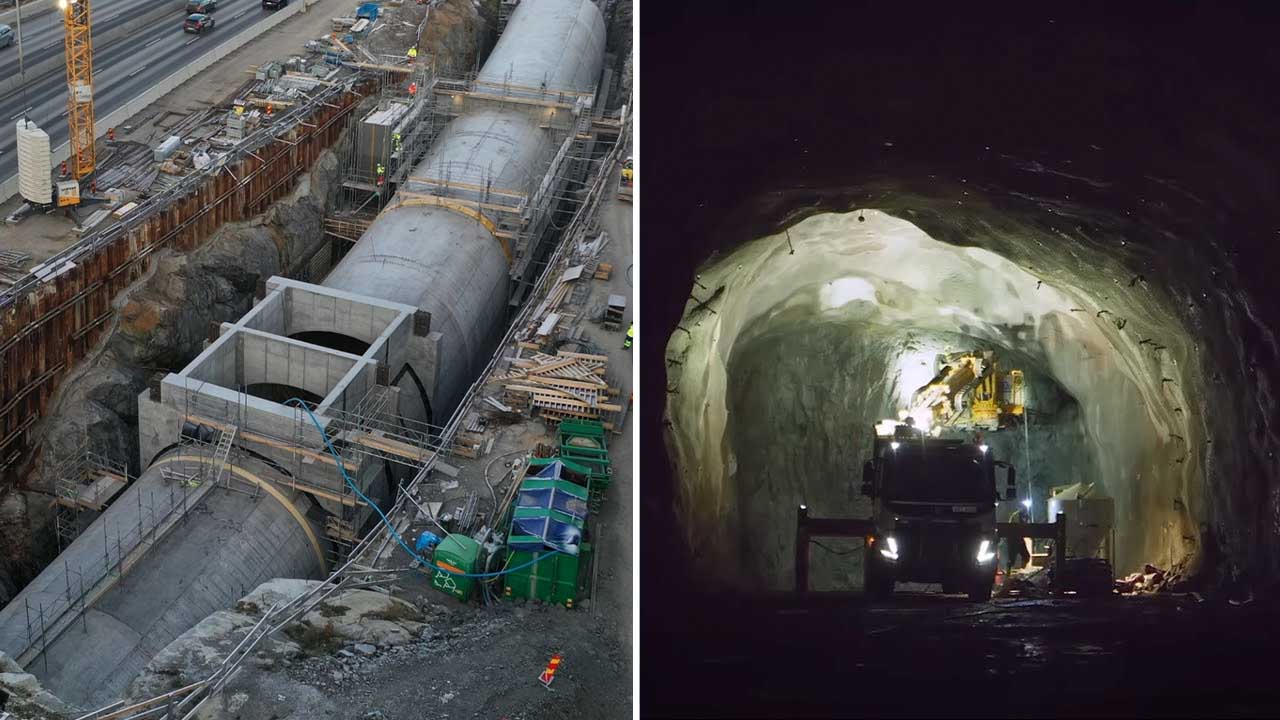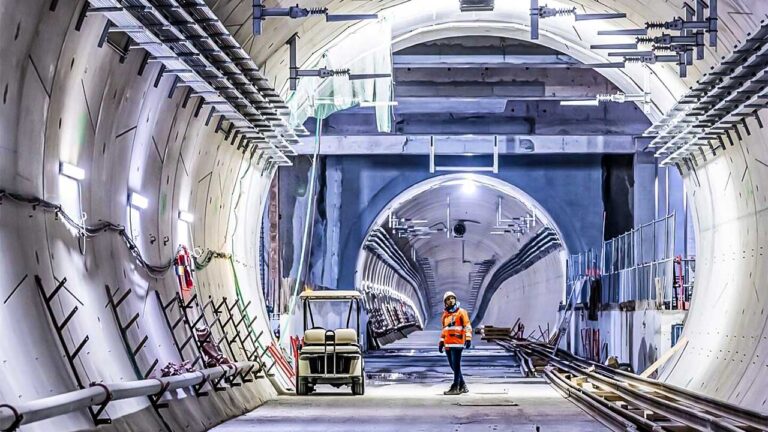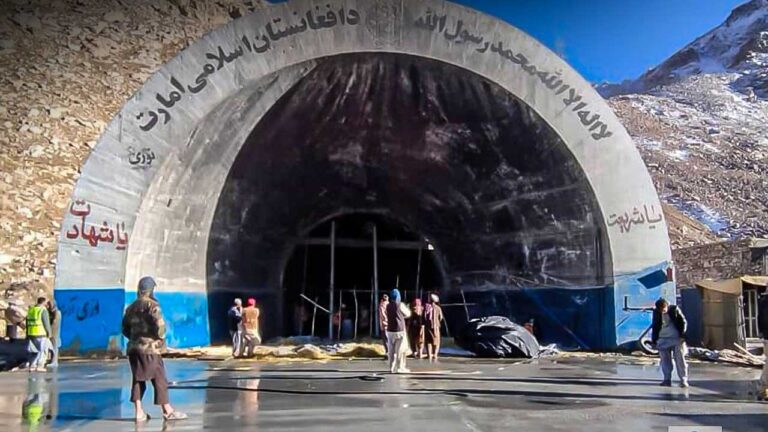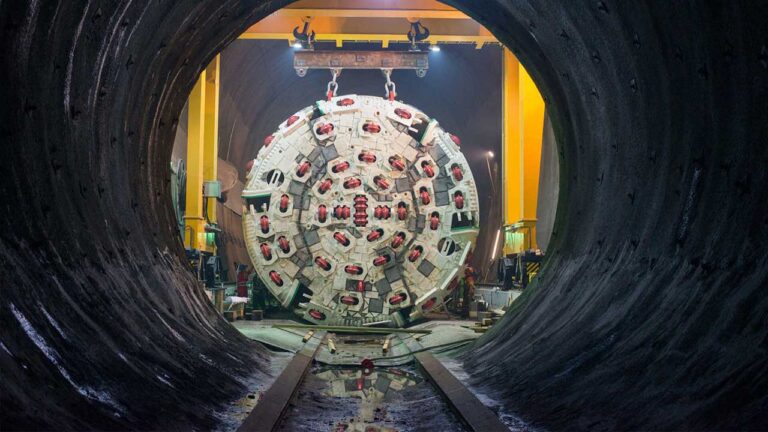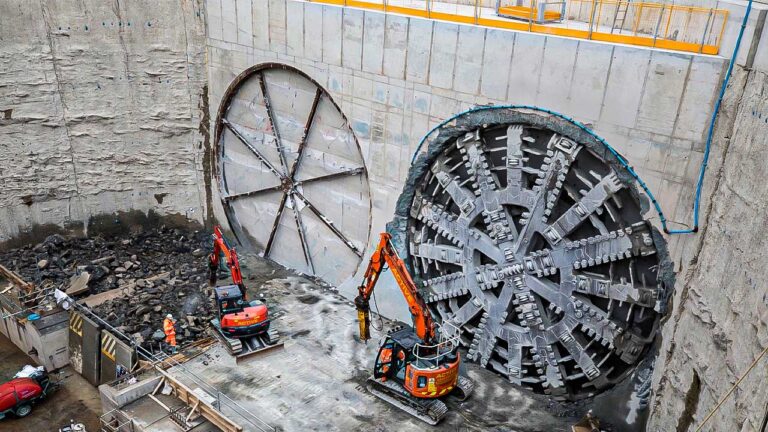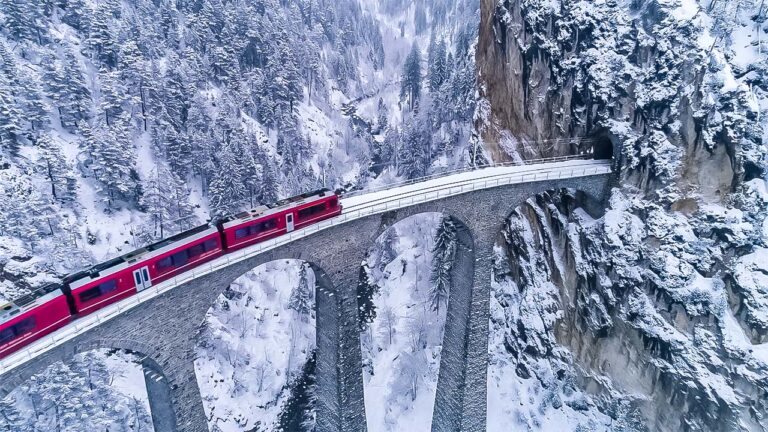Sweden’s $4BN Tunnel Gamble: E4 Stockholm Bypass
Stockholm, the capital and largest city of Sweden, is a city of remarkable significance, known for its rich history, cultural vibrancy, economic strength, and political centrality.
Imagine stepping back in time to around 1252 when Stockholm was founded. This historic city owes much of its early growth to Birger Jarl, a Swedish ruler who played a crucial role in its development. One pivotal moment in Stockholm’s history was a trade agreement with the German city of Lübeck, which helped the city flourish.
Geographically, Stockholm’s charm is undeniable. The city is uniquely spread across fourteen islands where Lake Mälaren meets the Baltic Sea. This picturesque setting not only adds to its beauty but also makes it an important port and transport hub.
The city now faces significant traffic congestion due to combination of various factors. Imagine living in Sweden’s vibrant capital, where rapid urbanization and population growth constantly increase the demand for road space. As more people flock to this economic hub, the pressure on Stockholm’s roads intensifies, creating a persistent congestion challenge.
The largest highway in Stockholm, Essingeleden, has been a critical artery since it opened in 1967, originally designed to accommodate 80,000 vehicles per day. However, with the city’s growth, it now handles around 160,000 vehicles on a typical working day. To alleviate this congestion and improve traffic flow, a monumental infrastructure project is underway: the E4 Stockholm Bypass.
This project represents a significant investment aimed at improving the traffic situation in Stockholm. By providing a new route for the European highway E4 that bypasses the Swedish capital, the E4 Bypass is expected to alleviate congestion and create a more efficient traffic network.
Stockholm, capital of Sweden, is brimming with cultural treasures. It’s a city that boasts stunning architecture and numerous museums.
Also Read: The Struggle to Restore Australia’s Paradise Dam
The city is an archipelago with many waterways and islands, which, while picturesque, restricts the space available for expanding road infrastructure. This geography naturally leads to bottlenecks, further complicating traffic flow. Even though Stockholm boasts an impressive public transportation system, some areas still lack sufficient alternatives to car travel. This situation forces many residents to rely heavily on cars, adding to the overall traffic volume.
The E4 in Sweden is a major highway that plays a vital role in connecting the country from north to south. Imagine starting your journey at Haparanda, near the Finnish border. As you drive along the E4, you follow the scenic Gulf of Bothnia, eventually reaching Gävle. From there, you continue southwards to Helsingborg, where the highway meets the ferry to Helsingør in Denmark. This route isn’t just a scenic drive—it’s a crucial artery for both cars and busses, facilitating transportation between the northern and southern parts of Sweden.
The E4 Stockholm Bypass is set to become third longest road tunnel, right after Sydney’s Westconnex Tunnel and Tokyo’s Yamate Tunnel. Picture about 140,000 vehicles cruising through this bypass every day by 2035, easing the traffic strain on Stockholm.
The cost of the E4 Stockholm Bypass project, one of Sweden’s largest infrastructure initiatives, has undergone several revisions over time. Initially estimated at $3.3 billion, the total cost has risen due to the complexity of construction and safety issues. The latest estimates place the cost at approximately $4.11 billion.
The journey to build this tunnel started in August 2014, but political issues soon put the project on hold. Construction picked up again in early 2015, and now there’s a decade-long road ahead to its completion.
Imagine navigating through the depths of Stockholm and beneath the tranquil waters of Lake Mälaren on the E4 Stockholm bypass. This innovative project features dual tunnel tubes, each designed to accommodate three lanes of traffic flowing in opposite directions. Delving an impressive 100 meters below ground level, with segments extending as deep as 60 meters under the lake’s surface, this ambitious endeavor is managed by Trafik Stockholm, the city’s central traffic control hub.
Safety and efficiency are paramount in this modern marvel. The tunnels are equipped with state-of-the-art monitoring and safety technologies. Continuous 24/7 CCTV surveillance will keep a watchful eye on traffic conditions, complemented by strategically positioned emergency exits for swift responses during unforeseen situations. A robust firefighting system stands ready to swiftly tackle any potential incidents, ensuring commuter safety.
Advanced detectors actively monitor air quality and potential hazards, ensuring a comfortable and secure journey for all travelers. What’s unique about this design, is the separate tunnels dedicated exclusively to traffic flowing in each direction. This innovative approach eliminates the risk of encountering oncoming vehicles, significantly enhancing safety and easing traffic congestion throughout the bypass.
Engineers carefully design tunnel layouts, ventilation systems, and emergency exits to guarantee secure passage for vehicles and pedestrians alike, placing a strong emphasis on maintaining structural integrity and ensuring the safety of all users.
In ensuring stability and minimizing landslide risks along the bypass route, engineers have implemented several crucial measures. They’ve adjusted slope angles using precise grading techniques and reinforced slopes with suitable materials, effectively mitigating potential hazards. Additionally, robust drainage systems play a pivotal role in managing water runoff and preventing soil saturation. Imagine advanced infrastructure like pipes, culverts, and channels efficiently redirecting water away from the roadbed, ensuring road stability and minimizing erosion.
Strategically placing retaining walls and structures is another critical aspect of the project. These structures are strategically positioned to support embankments, prevent soil erosion, and effectively stabilize slopes. Internally reinforcing slopes using techniques such as soil nailing, rock bolts, and geogrids further enhances stability, reducing the risk of landslides along the bypass route.
Also Read: Rail Baltica: The European Megaproject Set to Replace Russian Railways
Swedish government is taking bold steps towards environmental sustainability by implementing bans on petrol and diesel cars in certain city areas to improve air quality. This initiative is aligned with Sweden’s ambitious target of reducing carbon emissions by 30% by 2030. The government aims to achieve this goal by implementing various measures, including regulating traffic emissions.
In the context of the new E4 Stockholm Bypass, officials estimate that it will contribute less than 1% of CO2 emissions from traffic. This underscores the project’s minimal environmental impact in terms of carbon footprint, aligning with Sweden’s broader efforts to combat climate change and promote cleaner air in urban areas.
By diverting traffic underground, the Stockholm Bypass promises significant benefits beyond easing congestion. By routing traffic beneath the city, this ambitious project aims to protect delicate ecosystems like Lake Mälaren, which is Sweden’s third-largest freshwater lake. This approach not only minimizes the environmental impact on the lake’s surroundings but also reduces disturbance to nearby residential neighborhoods and important cultural sites. Thus, the tunnel not only enhances traffic flow but also demonstrates a commitment to preserving Stockholm’s natural and cultural heritage.
The Stockholm Bypass project is not just about reducing traffic. It’s about transforming the way people move through and around the city, making daily commutes more efficient and less stressful. The anticipation for the E4 Bypass reflects a city ready to embrace a future with improved infrastructure and better traffic management.
The E4 Stockholm Bypass project embodies a comprehensive approach that blends technical excellence with environmental stewardship. By prioritizing safety, implementing robust engineering solutions, and minimizing environmental impact, the Stockholm Bypass not only aims to improve traffic flow but also strives to foster sustainable development in the region. Can you envision the combined efforts ensuring a safer and more resilient infrastructure for future generations?

